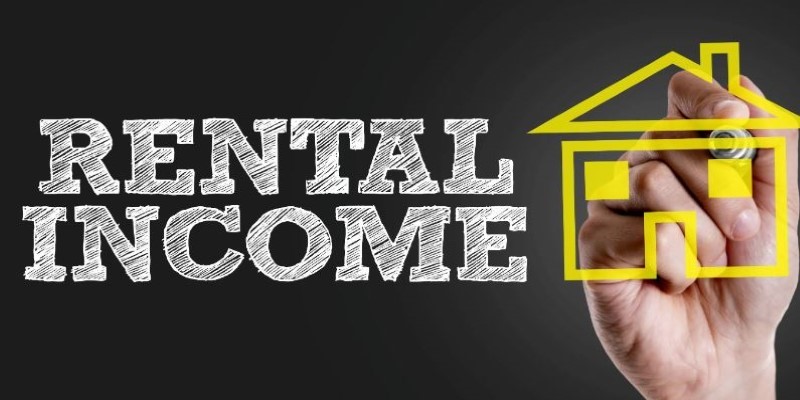Is Your Rental Property Eligible for Tax Deductions? All About Rental Real Estate Loss Allowance
Dec 13, 2024 By Georgia Vincent
Owning a rental property can be a rewarding way to build income and wealth over time, but it also comes with its own set of financial challenges. Sometimes, despite best efforts, a rental property operates at a loss. This is where the Rental Real Estate Loss Allowance comes into play. This provision in the tax code helps landlords offset these losses against their income, ultimately reducing their tax burden.

However, like many tax breaks, not everyone qualifies automatically, and the rules around eligibility and deduction limits can be tricky to navigate. In this article, we'll simplify the Rental Real Estate Loss Allowance, who can claim it, and how you might qualify, helping you maximize your investment's potential even in challenging financial years.
What is the Rental Real Estate Loss Allowance?
The Rental Real Estate Loss Allowance is a tax provision that enables rental property owners to offset their rental property losses against their regular income up to an amount. This would be greatly beneficial to property owners when their losses from several costs to maintain properties or mortgage interest, or even some of the fees charged by property management companies, outweigh the rental income. The basic benefit of this right is the reduction of a rental property loss by spreading its financial impact, smoothing it out through the reduction of the taxable income of the property owner.
However, this isnt a free-for-all deduction; the allowance comes with specific limits and requirements. Under standard tax rules, individuals can deduct up to $25,000 of rental property losses against other income, provided they meet certain income limits and other qualifications. For many landlords, this deduction offers valuable tax relief, providing financial support during less profitable years.
Who Qualifies for the Rental Real Estate Loss Allowance?
Qualification for a Rental Real Estate Loss Allowance is based on significant factors, including income level, property management activities, and property use. Eligibility for this condition usually falls into two categories: adjusted gross income within prescribed limits and actively engaged in managing rental properties.
Income Thresholds
To qualify for the Rental Real Estate Loss Allowance, meeting IRS income limits is essential. For single filers or joint filers with an AGI up to $100,000, the full $25,000 deduction is allowed. However, this deduction decreases as AGI approaches $150,000, after which its unavailable. Knowing your income bracket helps in estimating potential deduction benefits.
Active Participation Requirement

Besides income limits, qualifying for this allowance requires active participation. This means being involved in property decisions like tenant approval and repairs. Although owners can hire property managers, they must retain control over significant decisions. This requirement is less stringent than material participation standards, which require higher involvement for other tax deductions, making it accessible for most property owners.
How the Rental Real Estate Loss Allowance Can Benefit Property Owners
The Rental Real Estate Loss Allowance provides an essential safety net for property owners who face unexpected losses. By allowing a tax deduction for property losses, this allowance can provide financial relief during years when a property isnt as profitable as expected. Heres how it specifically benefits landlords:
Reduced Taxable Income:
The Rental Real Estate Loss Allowance lowers taxable income, potentially moving landlords to a lower tax bracket and reducing their overall tax liability. For those with additional income sources, this deduction offers significant savings, enhancing financial stability.
Offsetting Losses from High-Interest Loans:
High-interest mortgage costs, especially early in a loan term, can lead to losses. This allowance helps offset such expenses, allowing landlords to focus on equity building without a full tax burden during unprofitable years.
Improving Cash Flow:
By reducing tax liability, the Rental Real Estate Loss Allowance improves cash flow, especially benefiting newer landlords. Increased cash flow supports reinvestment in property maintenance or additional investments, alleviating immediate financial pressure from tax obligations.
Flexibility for Passive Investors:
The allowance offers tax relief to passive investors who meet active participation standards, like approving tenants and major expenses. This allows them to qualify for tax benefits without the need for full hands-on property management.
Limitations and Special Circumstances
Although the Rental Real Estate Loss Allowance is beneficial, certain limitations apply, and not all losses are deductible in the current tax year. Understanding these limitations can help landlords manage their expectations and plan accordingly.
Passive Loss Rules

Rental income is generally classified as passive, subject to passive activity loss (PAL) rules, meaning losses can only offset other passive income. If landlords dont meet the income or active participation requirements, these losses may be carried forward to future years. They can then offset future gains, providing flexibility in claiming deductions when profits arise.
Real Estate Professional Exception
Rental loss deductions aren't capped at $25,000 for real estate professionals. Qualifying requires over 750 hours annually in real estate activities, with more than half of the total working hours in this field. This exception is advantageous for those deeply involved in real estate, allowing unrestricted rental property loss deductions and easing tax burdens on high-involvement owners.
Loss Carryovers
If AGI limits or activity standards restrict loss deductions in a tax year, losses can be carried forward to future years when eligibility criteria are met. This flexibility enables landlords to eventually benefit from accumulated losses, making it a valuable strategy for those anticipating future profits or falling within qualifying income brackets in coming years.
Conclusion
The Rental Real Estate Loss Allowance provides valuable tax relief for property owners, helping offset losses during challenging financial periods. While there are income limits and active participation requirements, this deduction can significantly improve cash flow and reduce taxable income. For landlords who don't immediately qualify, options like loss carryovers and real estate professional status offer ways to benefit in the future. Understanding and leveraging this allowance is essential for any landlord aiming to maximize rental investment profitability.








